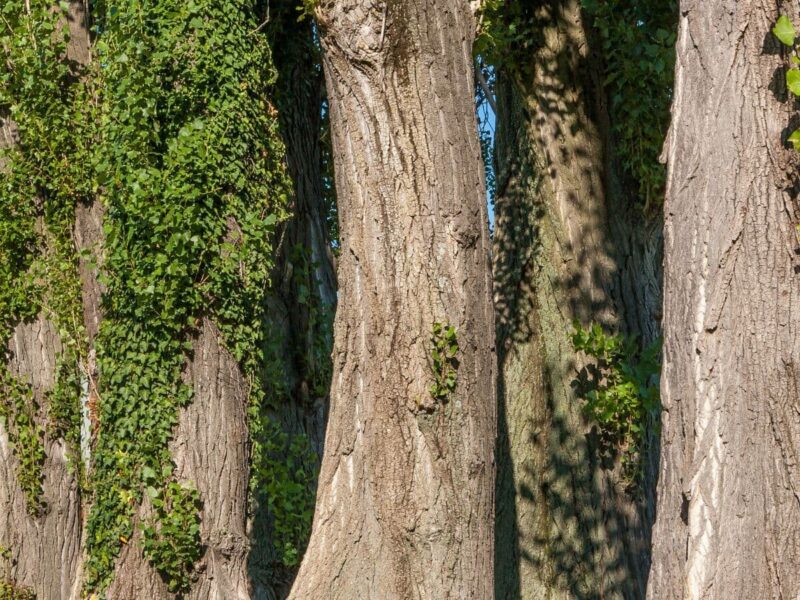Andy O’Brien, Arboricultural Consultant, blogs about the interesting history and his new-found admiration for a tree with close links to his home city – the Manchester poplar.
This week marks National Tree Week – the UK’s largest annual celebration of trees that marks the start of the winter tree planting season. Trees are such an important aspect of our lives and ecosystems and they bring so many benefits. They sustain wildlife, clean our air, produce oxygen, and are great for our mental health. My job means that I’m lucky enough to spend most of my time around trees, and when I’m visiting sites across the north-west of England I come across some very common species. But every now and again I’m gifted with some rare specimens.
Recently I have been working closely with Salford City Council as their Tree Officer, consulting on all tree preservation order and planning applications in the borough. This work has given me a new appreciation for a certain species of tree that, as a tree cutter, I have always been very wary of – the poplar. Poplars are very fast-growing and can grow very tall (up to 160 feet) – they have huge stems with very little internal canopy structure, and their roots can cause damage if planted too close to structures. They always seem, to me, to be planted in the wrong location and susceptible to many pests and diseases, which, given the wetter climate in the north, leads to early decay and reduced life expectancy. Couple this with the fact they’re relatively short-lived trees (approximately 50 -150 years), they often become dangerous within their planted locations.
Despite all this, since working in Salford, I have a renewed resect for the Manchester poplar. Populus nigra betulifolia is a clone propagated by taking cuttings from one of the UK’s rarest native trees commonly known as the black poplar (Populus nigra). The wild variety of the Manchester poplar is very rare, with only 7000 specimens found in the UK from a survey in 2002, and they have been in decline ever since.
During the Industrial Revolution, many trees in densely populated areas died because of air pollution. However, it was discovered that black poplar trees were more tolerant to the smoky, harsh conditions of industrial-era Manchester. As a result the Manchester poplar was developed and named after the city. During the 1930s it was recognised that the city needed to be greener and local men were incentivised to cycle around the city with poplar saplings and plant them in any spare land they came across. These trees played a key role in making the city greener and absorbing air pollution caused by the industry upon which its economy relied.
These ‘industrial’ generations of trees are now mature and in decline, so Manchester’s City of Trees is including the preservation of the Manchester poplar in its initiatives to plant trees and restore woodlands.
As I work with Salford City Council, I would like to think I can play a positive role in helping to revive and protect a once common sight around the city, and spread the Manchester love for the poplar once more.







